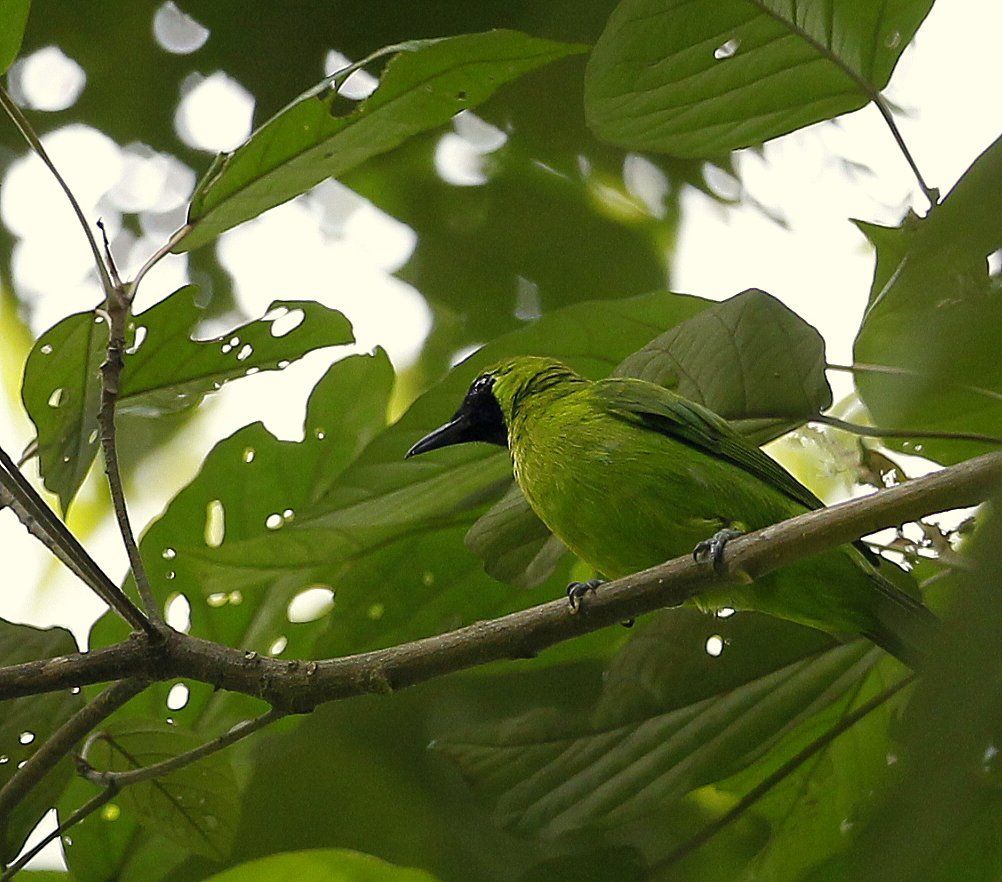| Citation |
|
Description |
Geographic Range [top]
Range Description: The species was found throughout the Sundaic lowlands from south Myanmar and southwest Thailand south through Malaysia, Borneo and the Greater Sundas, Indonesia.
Countries occurrence:
Native:
Brunei Darussalam; Indonesia; Malaysia; Myanmar; Singapore; Thailand
Additional data:
? Continuing decline in area of occupancy (AOO): Unknown
? Extreme fluctuations in area of occupancy (AOO): No ? Estimated extent of occurrence (EOO) - km2: 4280000
? Continuing decline in extent of occurrence (EOO): Unknown ? Extreme fluctuations in extent of occurrence (EOO): No
? Continuing decline in number of locations: Unknown
? Extreme fluctuations in the number of locations: No
Range Map: Click here to open the map viewer and explore range.
Population [top]
Population: The population size is unknown, but the species is described as scarce. Race zosterops had previously been described as common where habitat remains (Wells 2016), but currently the evidence suggests that birds are being trapped throughout the range and have either disappeared or become very rare at many sites throughout Indonesia and now Peninsular Malaysia as well (Eaton et al. 2015, J. Eaton in litt. 2016, Bas van Balen in litt. 2016).
Trend Justification: The population is suspected to be declining at a rapid to very rapid rate due to tremendous levels of trapping to supply the cage bird trade. This species was present at very low numbers in the markets at the turn of the century, with none recorded in Medan in 1997 and 1998 then 110 observed in the following three years (Shepherd 2006). Numbers slowly increased with an annual number traded through the markets in Medan estimated at 842 birds during 2012-2013 (Harris et al. 2015). Since then however, the species has suddenly come into fashion (Eaton et al. 2015), and right now mind-boggling numbers are being traded. J. Eaton in litt. (2016) states that 5000 individuals per month are currently being imported from Sarawak into Kalimantan. In Kalimantan it was stated by shop owners to be the species in highest demand, hardest to find (supply) and to be increasing most rapidly in price (A. Miller in litt. 2016). The cost of an individual in 2014 was US$ 44 (Chng et al. 2015); in September 2016 one was priced at US$ 99 (S. Chng in litt. 2016).
Current Population Trend: Decreasing
Additional data:
? Number of mature individuals: Unknown ? Continuing decline of mature individuals: Unknown
? Extreme fluctuations: No ? Population severely fragmented: No
? Continuing decline in subpopulations: Unknown
? Extreme fluctuations in subpopulations: No ? All individuals in one subpopulation: No
Habitat and Ecology [top]
Habitat and Ecology: A species of lowland evergreen forest, including secondary forest and occasionally heavily wooded parkland and certain plantations (Wells 2016). Occurs from sea level to 1100 m (Wells 2016). Diet is principally arthropods and fruit, with the former gleaned from foliage. Joins mixed-species feeding flocks.
Systems: Terrestrial
Continuing decline in area, extent and/or quality of habitat: Unknown
Generation Length (years): 4.2
Movement patterns: Not a Migrant
Threats [top]
Major Threat(s): The number of individuals observed at bird markets in Indonesia has increased dramatically in recent years. The species is particularly desirable due to its ability to rapidly learn the song phrases of other species, and is a category in the competitive singing events held throughout Java. Large numbers have been confiscated along trading routes into Java (S. Chng in litt. 2016), but there are reports of many times the amount seized being imported on a monthly basis (J. Eaton in litt. 2016). Habitat loss may have played an ancillary role in the decline through increasing the proportion of the global population of the species that is accessible to trappers.
Conservation Actions [top]
Conservation Actions: Enforcement of national laws regarding quotas of wild-caught species for the cage bird trade must be prioritised. Investigation into the impacts and extent of trapping networks throughout Borneo and Peninsular Malaysia is also required. Comparison of densities or encounter rates at sites first surveyed in the late 20th century would provide some quantification of the rates of decline and provide a baseline for further monitoring.
Citation: BirdLife International. 2016. Chloropsis sonnerati. The IUCN Red List of Threatened Species 2016: e.T22704950A93992403. http://dx.doi.org/10.2305/IUCN.UK.2016-3.RLTS.T22704950A93992403.en. Downloaded on 23 March 2017.
Disclaimer: To make use of this information, please check the .
Feedback: If you see any errors or have any questions or suggestions on what is shown on this page, please provide us with feedback so that we can correct or extend the information provided
|

